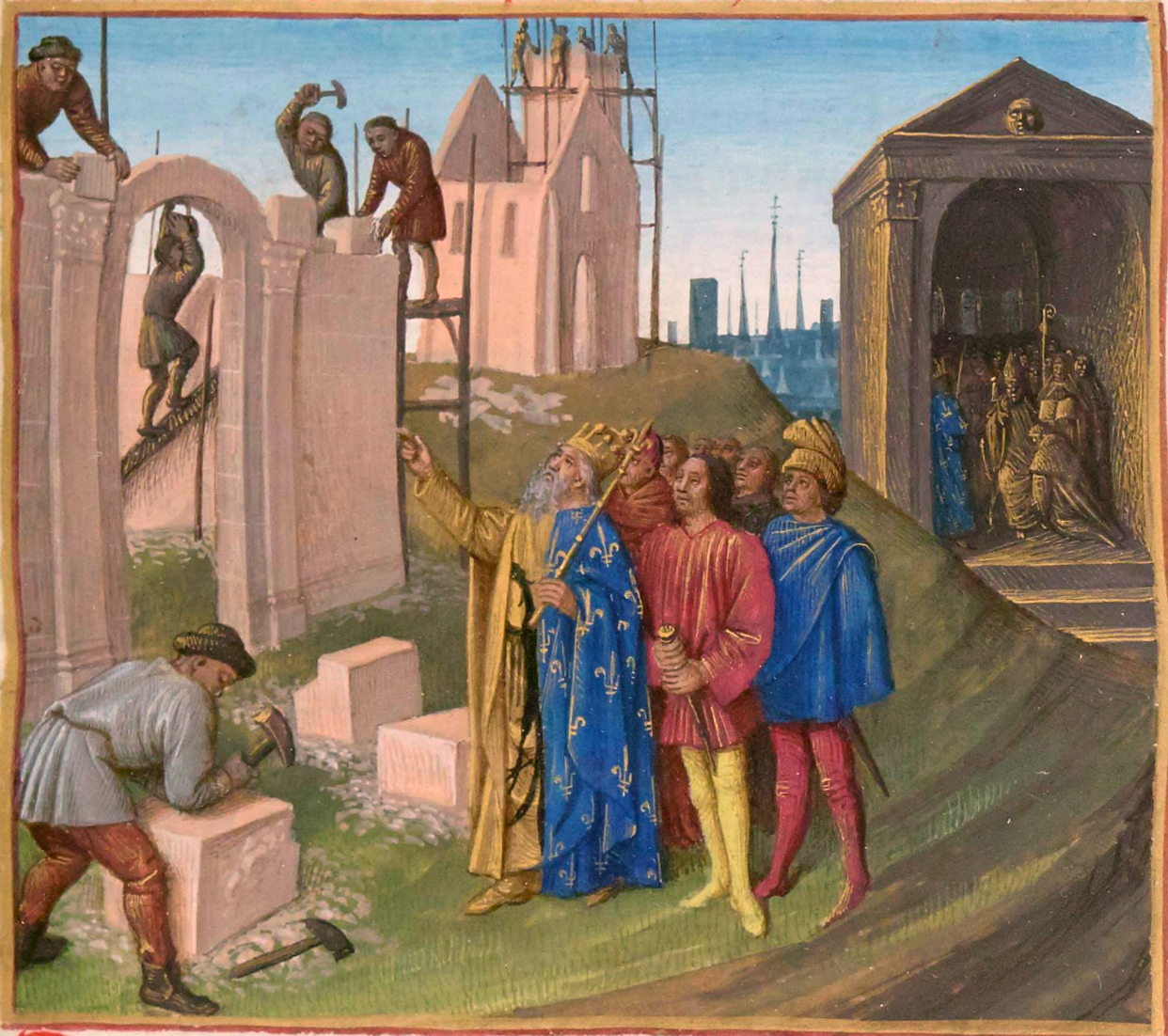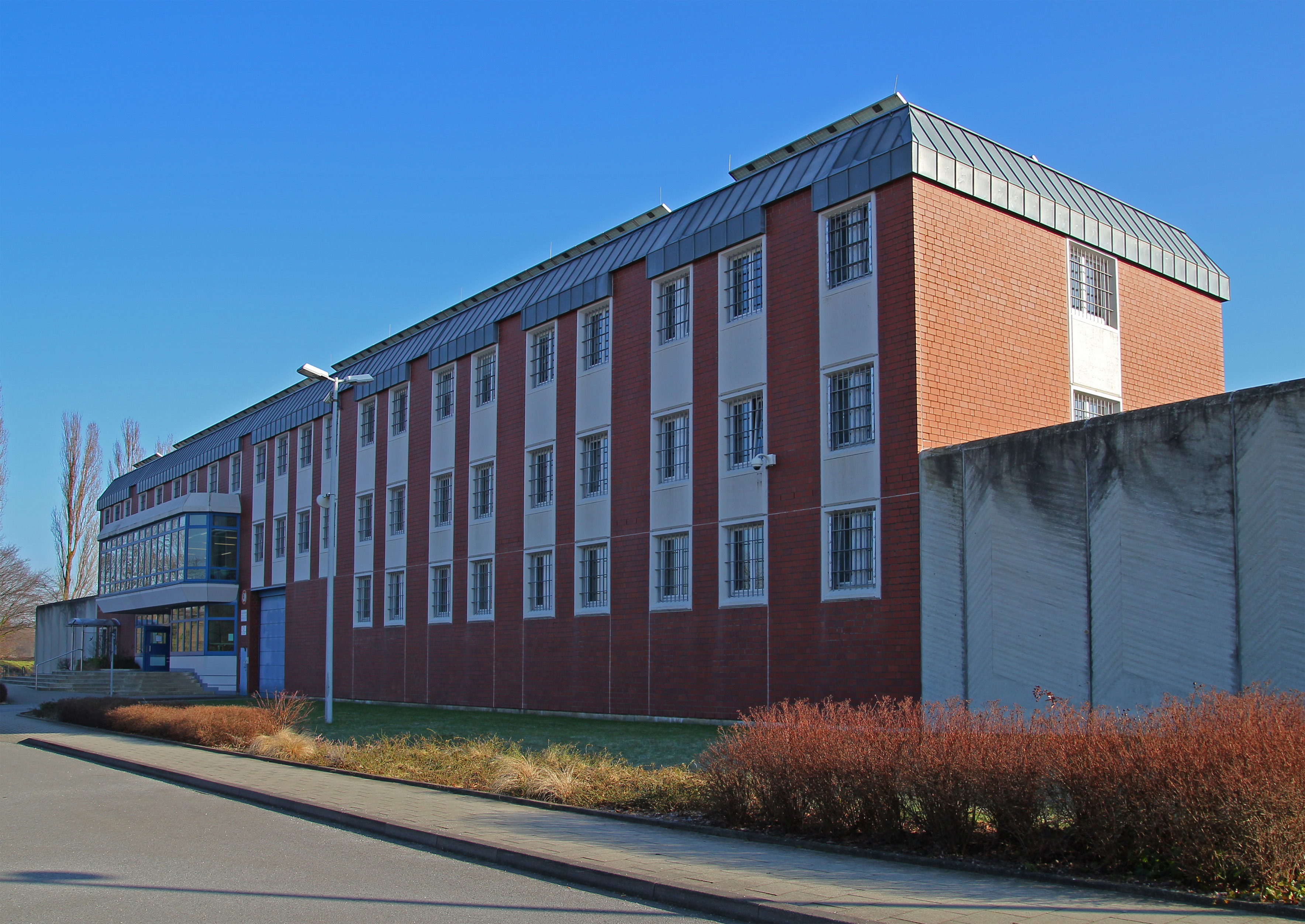|
Soers
Soers is a community within Aachen and part of the district of Aachen-Laurensberg. The predominantly rural district today stretches from the border of Aachen-Mitte, the central district of Aachen, past the slopes of the Lousberg, a hill in the north of the city. It is a wetland that is drained by several rivers. The Wurm drains at out of the area's north end, and is the only drain of the Rur River in the Aachen Basin. Soers is known mainly as a result of the Old Tivoli, the former football stadium of Alemannia Aachen Aachener Turn- und Sportverein Alemannia 1900 e. V., short Alemannia Aachen (), is a German football club from the western city of Aachen, North Rhine-Westphalia. A long-term fixture of the country's second division, Alemannia enjoyed a three- .... The area's largely undeveloped nature and its easy access to the A4 motorway has caused the community to become further developed in recent years. The police headquarters of Aachen were constructed there, as well ... [...More Info...] [...Related Items...] OR: [Wikipedia] [Google] [Baidu] |
Laurensberg
Laurensberg is a quarter (''Stadtteil'') and borough (''Stadtbezirk'') of Aachen, Germany. As a borough, Laurensberg includes, in addition to Laurensberg itself, Orsbach, Seffent, Soers, Vaalserquartier and Vetschau, as well as the residential areas of Gut Kullen and Steppenberg. Laurensberg is the largest district of Aachen by area. The borough borders other Aachen city boroughs Haaren, Aachen-Mitte and Richterich and the German communities of Kohlscheid (which is part of Herzogenrath) und Würselen (both of which belong to the district of Aachen, which is distinct from the city). Beyond the German border, the borough borders the Belgian town of Kelmis, in the Province of Liège, as well as the Dutch communities of Vaals, Gulpen-Wittem and Simpelveld, all contained with the Dutch Province of Limburg. The borough Laurensberg covers 2,997 hectares and has 20,381 inhabitants (as of 2020). The borough is characterized by its wide hilltop views and its interesting (from an art ... [...More Info...] [...Related Items...] OR: [Wikipedia] [Google] [Baidu] |
New Tivoli
The Tivoli, colloquially known as the new Tivoli, is a football stadium in the Sportpark Soers in Aachen, Germany, that opened on 17 August 2009 replacing the nearby old Tivoli. It hosts the home matches of Alemannia Aachen in the 3. Liga. The stadium has a capacity of 32,920 spectators – space for 11,681 standing spectators, 19,345 seated spectators and others at 1,934. The (all-)seating capacity for international games is set at 27,250. The city first suggested the new stadium should be built outside the city, near the local airport. However, fans wanted the stadium built within the city. After much debate, plans were released in February 2007, showing that the new stadium would be built in Sportpark Soers, the sporting area the previous stadium was in. About €4.2 million of the construction costs were financed by bonds mainly targeted at supporters of Alemannia Aachen. The first match in the new stadium was against the Belgian team Lierse SK, but it was closed for th ... [...More Info...] [...Related Items...] OR: [Wikipedia] [Google] [Baidu] |
Aachen Polizeipräsidium Und JVA
Aachen is the List of cities in North Rhine-Westphalia by population, 13th-largest city in North Rhine-Westphalia and the List of cities in Germany by population, 27th-largest city of Germany, with around 261,000 inhabitants. Aachen is located at the northern foothills of the High Fens and the Eifel Mountains. It sits on the Wurm (Rur), Wurm River, a tributary of the Rur (river), Rur, and together with Mönchengladbach, it is the only larger German city in the drainage basin of the Meuse. It is the westernmost larger city in Germany, lying approximately west of Cologne and Bonn, directly bordering Belgium in the southwest, and the Netherlands in the northwest. The city lies in the Meuse–Rhine Euroregion and is the seat of the Aachen (district), district of Aachen ''(Städteregion Aachen)''. The once Celts, Celtic settlement was equipped with several in the course of colonization by Roman people, Roman pioneers settling at the warm Aachen thermal springs around the 1st cen ... [...More Info...] [...Related Items...] OR: [Wikipedia] [Google] [Baidu] |
Lousberg
At 264 meters, the Lousberg (historically sometimes also spelled ''Louisberg'', ''Luisberg'' or ''Loysberg'') is a prominent elevation on the northern edge of the historic center of Aachen, which was laid out as a forest and mountain, mountain park at the beginning of the 19th century according to plans by . The origin of the name is not entirely clear. It could come from ''lousen'' ("to look"), since the mountain offers an excellent panoramic view, or it could be traced back to Louis the Pious, the son of Charlemagne. Another explanation has to do with the Aachen dialect term ''lous'', which means "clever". Geology, formation Geologically, the Lousberg is one of Aachen's three inlier mountains, along with the and the , and one of the southernmost foothills of the Aachen-Limburg (Netherlands), Limburg Cretaceous. It was formed during the Upper Cretaceous, when the region around Aachen was affected by a Europe-wide marine transgression, during which initially sandy and later p ... [...More Info...] [...Related Items...] OR: [Wikipedia] [Google] [Baidu] |
Hauptstadion
The Hauptstadion is a stadium located in Sport Park Soers in Aachen, Germany. It is used for equestrian and show jumping. It was renovated in 2005 and has a capacity of 40,000 spectators. It hosted the 2006 FEI World Equestrian Games The 2006 FEI World Equestrian Games were held in Aachen, Germany from 20 August to 3 September 2006. They were the 5th edition of the FEI World Equestrian Games, games which are held every four years and run by the International Federation for Eque .... In July 1970, it was the location of the Aachen Open Air Pop Festival. External links Venue information Horse racing venues in Germany Show jumping venues [...More Info...] [...Related Items...] OR: [Wikipedia] [Google] [Baidu] |
Aachen Prison
Aachen Prison is a penal facility located in the Soers in Aachen, North Rhine-Westphalia, Germany Germany, officially the Federal Republic of Germany, is a country in Central Europe. It lies between the Baltic Sea and the North Sea to the north and the Alps to the south. Its sixteen States of Germany, constituent states have a total popu .... As of 2007, 800 criminals are serving their sentences in the prison. Brigitte Kerzl serves as the director of the prison. On 26 November 2009 two dangerous prisoners escaped from the prison but were later caught. References External links Aachen Prison's website Prisons in Germany Buildings and structures in Aachen {{NorthRhineWestphalia-struct-stub ... [...More Info...] [...Related Items...] OR: [Wikipedia] [Google] [Baidu] |
Aachen-Mitte
Aachen-Mitte is one of the seven boroughs of the city of Aachen, Germany, and contains the quarters of Beverau, Bildchen, Burtscheid, Forst, Frankenberg, Grüne Eiche, Hörn, Lintert, Pontviertel, Preuswald, Ronheide, Rothe Erde, Stadtmitte, Steinebrück and West. As the center of the city of Aachen, the district is by far the most populated, with over 168,000 residents. It contains both the Aachen Cathedral and Aachen Rathaus, which are each near the city center, as well as Aachen's main theatre. Numerous squares, including Hansemannplatz, Kaiserplatz, and Lindenplatz are likewise contained within the district, as is the medieval ''Ponttor'', which was one of the original gates in the wall surrounding the city. Sights Attractions include: * the Aachen Cathedral * the Aachen Rathaus * the Historical Altstadt * the medieval Ponttor * the association football stadium new Tivoli * Frankenberg Castle * Burtscheid Abbey * Aachen's City Gardens * the Lousberg, a high hill near do ... [...More Info...] [...Related Items...] OR: [Wikipedia] [Google] [Baidu] |
Wurm (Rur)
The Wurm (; ) is a river in the state of North Rhine-Westphalia in western Germany. It rises in the Eifel mountains and flows for 57 kilometres before discharging into the Rur. Geography The Wurm is a left (western) tributary of the Rur (). The Rur is a tributary of the Meuse. The sources of the Wurm are several brooks in the forests southwest of Aachen, which form the Wurm after the ''Diepenbenden'' reservoir. From there the Wurm nowadays flows through canals through the city of Aachen, until it resurfaces again at the ''Europaplatz'' in the east of Aachen. North of Aachen (between Kerkrade and Herzogenrath) the river forms the border with the Netherlands for approximately 10 km. It flows into the Rur near Heinsberg. Other towns on the river Wurm are Würselen, Übach-Palenberg and Geilenkirchen. The name ''Wurm'' is thought to originate from the German word ''warm'' (same meaning in English), as the source brooks were fed from the thermal springs in Aachen. Ga ... [...More Info...] [...Related Items...] OR: [Wikipedia] [Google] [Baidu] |
Rur (river)
The Roer (, ) or Rur (; ) is a major river that flows through portions of Belgium, Germany and the Netherlands. It is a right (eastern) tributary to the Meuse (). About 90 percent of the river's course is in Germany. It is not to be confused with the rivers Ruhr (river), Ruhr and Röhr (river), Röhr, which are tributaries of the Rhine in North Rhine-Westphalia. History During the Middle Ages the valley of the Roer lay mostly within the Duchy of Jülich. In 1795, until 1814, during which time the area was part of French First Republic, the French Republic and First French Empire, Empire, it gave its name to the French ''département'' of the Roer (department), Roer. The Roer represented an important front in the Allied push towards Germany at the end of the Second World War. A fortified area known as the Roer Triangle, formed by the towns of Roermond and Sittard, in the Netherlands, and Heinsberg in Germany, was the scene of heavy fighting at the beginning of 1945. Op ... [...More Info...] [...Related Items...] OR: [Wikipedia] [Google] [Baidu] |
Old Tivoli
The Tivoli, colloquially known as the old Tivoli, was a football stadium in Aachen, Germany. Opened in 1928, it was used by the city's largest football team, Alemannia Aachen, until the opening of the new Tivoli in 2009. Overview In 1908, the city of Aachen leased the area of the old manor Tivoli to the club, named after the inn ''Gut Tivoli'' which was located there since the 19th century, in turn taking its name from the town of Tivoli in central Italy. The club later built a football ground there. In 1925 more land was added to the lease, and the construction of the stadium was started. Inaugurated on 3 June 1928 it had a capacity of 11,000. After World War II Alemannia Aachen played in the ''Oberliga West'', and the stadium became too small. In September 1953 a standing tribune was built (the ''Würselener Wall.'') It wasn't until 1957 that seats were added to the tribune and Floodlights for nighttime events. The new stadium was inaugurated on 28 August 1957 with a game a ... [...More Info...] [...Related Items...] OR: [Wikipedia] [Google] [Baidu] |
Alemannia Aachen
Aachener Turn- und Sportverein Alemannia 1900 e. V., short Alemannia Aachen (), is a German football club from the western city of Aachen, North Rhine-Westphalia. A long-term fixture of the country's second division, Alemannia enjoyed a three-year turn in the Bundesliga in the late 1960s and, after a successful 2005–06 campaign, returned to the first division for a single season. The club slipped to third-division play and in late 2012 entered into bankruptcy. They finished their 2012–13 3. Liga schedule before resuming play in the tier IV Regionalliga West in 2013–14. In the 2023–24 Regionalliga, Alemannia finished 1st in the West Group, which got them immediately promoted to the 2024–25 3. Liga. Alemannia carries the nickname "the potato beetles" (Kartoffelkäfer) because of their traditionally striped yellow-black jerseys, which make them look like the particular insects. The home of Alemannia is the Tivoli. History Foundation to World War II In the second ha ... [...More Info...] [...Related Items...] OR: [Wikipedia] [Google] [Baidu] |





